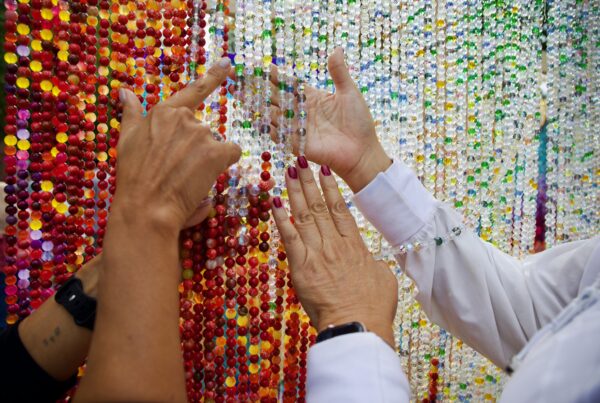This blog shares three key steps to building a stronger advocacy campaign, highlighting the importance of defining your campaign goals and gathering essential information.
When I was growing up, my mom would remind me:
“Si las cosas que valen la pena fueran faciles, todo el mundo las haría” (If the things that are worthwhile were easy, everyone would do them).
And, for better and for worse, she is right, as moms often are. Our work as advocates in pushing for better and more just worlds is indeed hard, and building effective campaigns is difficult for many reasons. However, these challenges can be overcome through some key steps and strategies.
What is an advocacy campaign? In the broadest sense, it’s carrying out actions with the goal of reaching a particular outcome. Campaigns can be elaborate and well-funded; for example, celebrity appearances on social media endorsing a particular policy or big lobbying days that bring dozens of stakeholders to the state capitol. But campaigns can also be simple, like asking your organization’s members to email their representatives to oppose legislation or drafting a letter to the governor urging them to sign a bill into law.
Building an effective advocacy campaign involves three key steps. First, you need to decide on the campaign’s goal – pass a particular bill, make sure certain provisions are included in agency rulemaking, secure funding for initiatives, etc. Second, you must figure out who has the power to make this thing happen: is it the governor? One particular legislator? Third, you should gather as much information as possible on why those with power have not yet taken the action you want them to take, and then finally decide on what the campaign must do to tip the scales in your favor.
The last two steps are where the bulk of a campaign resides and where most of the challenges live. Learning what prevents your decision-maker from acting is difficult. A good start is to look at their public opinions and those of their advisors. You will often need to read between the lines to glean their real concerns. It’s helpful also to understand the broader context in which a decision is being made. For example, affordability is currently a top concern for many, and I have found that although it’s not always something that gets brought up directly, it’s always in the back of decisionmakers’ minds.
Once you know what is preventing your decision-maker from acting, you must decide what steps you can take, and here is where you can get creative. For some campaigns, you may learn that a decision-maker is particularly sensitive to the concerns of one segment of the population. One way to address this is by dispelling the accuracy of that group’s claims. This can be done in a myriad of ways, like writing op-eds that highlight these disparities or requesting meetings to speak directly with decision makers. You can also approach the group in question to find common ground. For example, some of my advocacy around coastal resilience has conflicted with other advocates who rightfully argue for more affordable housing, so we have brought these groups together to find solutions that work for all of us.
Learning and responding often tie into each other, which is why in any advocacy campaign you should track the effectiveness of the actions taken and responses generated. In my work pushing for truck electrification to reduce harmful diesel pollution, we know that people care deeply about their health, so that is the first point we address. But in doing so, decisionmakers have sometimes responded by saying, yes, sure, clean air is important, but this is too expensive. That tells us that we need to educate people not only on the costs of inaction but also on funding mechanisms that can make this transition feasible. I have found that creating a plan that links how each action addresses the concerns we learn about and lays out a timeline for implementation is an extremely powerful tool. Although the plan will need to be regularly updated as learning and action feed into each other, this practice has allowed me to avoid becoming overwhelmed and losing sight of the target.
In advocacy, there is indeed strength in numbers and building coalitions can be a powerful strategy for influencing decision makers. Decisionmakers are often influenced by special interests who may be opposed to the outcome you are advocating for. Reasons range from special interests being important funders for election campaigns to groups with more resources paying for large advertising campaigns that convince decisionmakers that their positions are what most people think. It’s therefore extremely important for advocates to find as many allies as possible who can push for the same message. If it becomes clear to a legislator that 80% of their constituents won’t vote for them if they support a particular policy, it won’t matter how much money a donor will give to their campaign.
By working with others, not only can you build the power to convince, but you can also expand your access to information gathering and ability to carry out actions.
Working in coalition with others does present its own challenges. The more people you bring in, the more opinions there will be on what the goal should be and how to achieve it. Some of the strongest campaigns I have seen happen when groups can agree on a broad common goal and agree to disagree on some of the details. This requires flexibility and generosity toward others. It also requires having a clear notion of your vision, so you can effectively advocate for it when making group decisions. Working in coalition does not mean giving up on your ideals but rather staying true to them while finding ways to work alongside people who you might at times strongly disagree with.
Advocacy work in 2025 has not gotten easier, but by working through a process and laying out clear steps and strategies, you can avoid getting lost in the tangle that is sometimes set up precisely to keep you from making it through. The work is indeed hard, but we also know with certainty that building better worlds is worthwhile.




